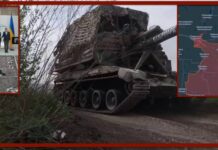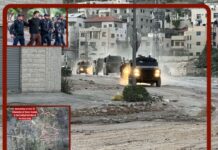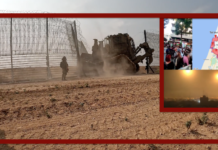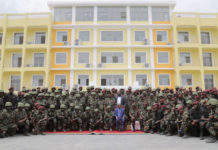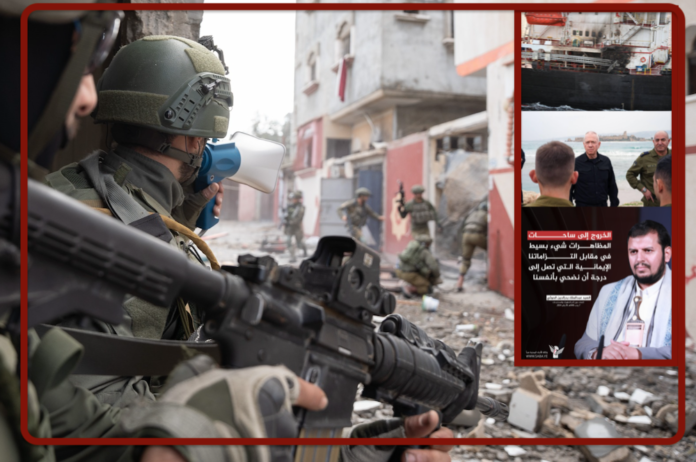
The European Parliament has approved a bill calling on Israel for a ceasefire. On the evening of January 18, the Israeli war cabinet met urgently.
Israeli Army Chief of Staff Herzi Halevi: “The probability that a war will break out in the north, on the Lebanese front, is greater than it was in the past. Defense Minister Yoav Gallant made a civilian assessment of the readiness of the northern sector to expand the military campaign: “We must be prepared for the deterioration of the security situation in the north and the fact that we will have to intervene militarily. For the residents of the North to return to their homes. All eyes are on Haifa and the Beeka valley where Hezbollah has its drug factories.”
The evening before, Minister Gallant addressed the soldiers: “Unless Hamas is completely disbanded, we will not be able to live in the State of Israel. We will continue to fight until we win […] until we defeat Hamas, strip it of its significant military capabilities and remove it from power in the Gaza Strip.” In military matters, as of January 16, the Israeli Defense Minister said that the high-intensity ground operation in the northern Gaza Strip was over. “In the southern Gaza Strip the intense phase will end soon,” he said in a press conference, without giving precise indications on the timing. Gallant said the army would conduct low-intensity operations in the northern Gaza Strip, adding that Israeli forces were working to find the remaining targets of the Palestinian group Hamas in the area.
Israeli President Herzog told the press before the meeting: “What is happening now is not a war between Israel and Hamas, but a war between us and the evil empire that originates in Iran.”
The Israeli media have a different opinion, according to which the withdrawal of the Golani brigade from Gaza is proof of the ferocity of the fighting in the area. Despite the small size of the camps in the central regions, Israeli army forces faced intense fighting. Hamas has learned lessons from the fighting in the northern Gaza Strip and the Gaza Strip and has adopted new methods of warfare, making it difficult for the army to use the same military tactics used in those areas previously: “The fighting we are seeing in these areas they reflect the great preparations of Hamas and Islamic Jihad in the period preceding the war against Israel”.
Tension remains high in the Red Sea. The United States attacked on the night of January 18: US Central Command said it had carried out 14 strikes against targets in Yemen. The US National Security Advisor said that if the Houthis stop their attacks in the Red Sea, the US will remove their terrorist classification and the classification will not take effect until 30 days have passed to allow the threat to be mitigated. impact of the decision on Yemenis. Other attacks by the United States and Israel were recorded at 05.40 on January 18 on the Yemeni capital Sanaa. At least two Tomahawk cruise missiles were launched against the port of Hodeida.
The Al Jazeera television channel, citing Yemeni media, reports that the attacks were carried out against military police in the Damar al-Qarn area south of the Yemeni capital Sanaa. Two airstrikes on the port city of Hodeidah, airstrikes on the city of Saada and the city of Al-Hawban were also reported.
The attacks on Houthi targets in western Yemen included several Tomahawk cruise missiles fired from Arleigh Burke-class guided-missile destroyers and an Ohio-class guided-missile submarine in the Red Sea, according to a U.S. defense official.
Wall Street Journal sources reported that: “It is estimated that about a quarter of the Houthis’ weapons arsenal was destroyed in the latest attacks. Responding to the article was a speech by the leader of the Ansar Allah movement, Abdul Malik Badr al-Din al-Houthi in which he not only states that the Houthi arsenal is in good condition but that US aggression will not unblock the Red Sea for British and US ships.
Russia, through Foreign Affairs Minister Sergei Lavrov, declared that: “The United States, together with the British and some other allies, have violated every possible norm of international law that protects commercial navigation (…) No one authorized attacks against Yemen,” the Russian Foreign Minister said.
The United Kingdom Maritime Trade Office (UKMTO) reported on the 17th at 19:30 an attack in the Gulf of Aden, south of the city of Aden, Yemen, caused by a UAV that hit a ship in the area.
According to the Houthi Spokesperson it is the American ship Genco Picardy in the Gulf of Aden with anti-ship missiles. The ship flying the flag of the Marshall Islands was hit by a Houthi kamikaze drone. Rescued by an Indian Navy ship on January 18th.
115 human rights organizations and networks condemn US-British aggression against Yemen.
Meanwhile in the Al-Bayda region of Yemen, once under the control of former president Hadi and where al Qaeda cells are present, the Houthis have launched total mobilization. One post reads: “Today, the local authority of Radaa city, Al Bayda Governorate, launched a general mobilization and mobilization to deal with American-British aggression.”
The Yemeni news agency SABA reported that: the “National Progress Party, American terrorism spreading in the region must be classified, condemned and tried. The National Progress Party condemned the US designation of Ansar Allah as a “terrorist organisation”.
Islamic Jihad and Hezbollah also condemned the inclusion of the Houthis in the terrorist classification.
And now a look at the front line updated at 5pm on January 18th.
Israeli attack on the hospital of martyr Abu Youssef Al-Najjar, east of Rafah.
Exchanges of fire were also recorded between Hezbollah and Israel in the south of Lebanon and those from Hezbollah arrived in the upper Galilee, Al-Malikiyah area in the Upper Galilee.
On January 18, IDF bombing the Palestinian University building in Gaza.
In Northern Gaza, clashes continue in the area east of Jabalia, north of Fataa. Where clashes between the Israeli army and Hamas men take place. There would have been deaths among Israeli army men and Hamas militants.
The clashes remain very intense in Khan Yunis, in the south of the Gaza Strip. The Israelis bombed Bani Suhaila and the Qassam brigades responded by luring soldiers into a trapped house. There are reported deaths and injuries in Bani Suhaila, east of the city of Khan Yunis, south of the Gaza Strip. Clashes also occurred in the Abasan area, east of the city of Khan Yunis.
In the West Bank, the assault on the Tulkarem camp appears to have ended after clashes that lasted all day between the army and Qassam brigades.
Antonio Albanese e Graziella Giangiulio


